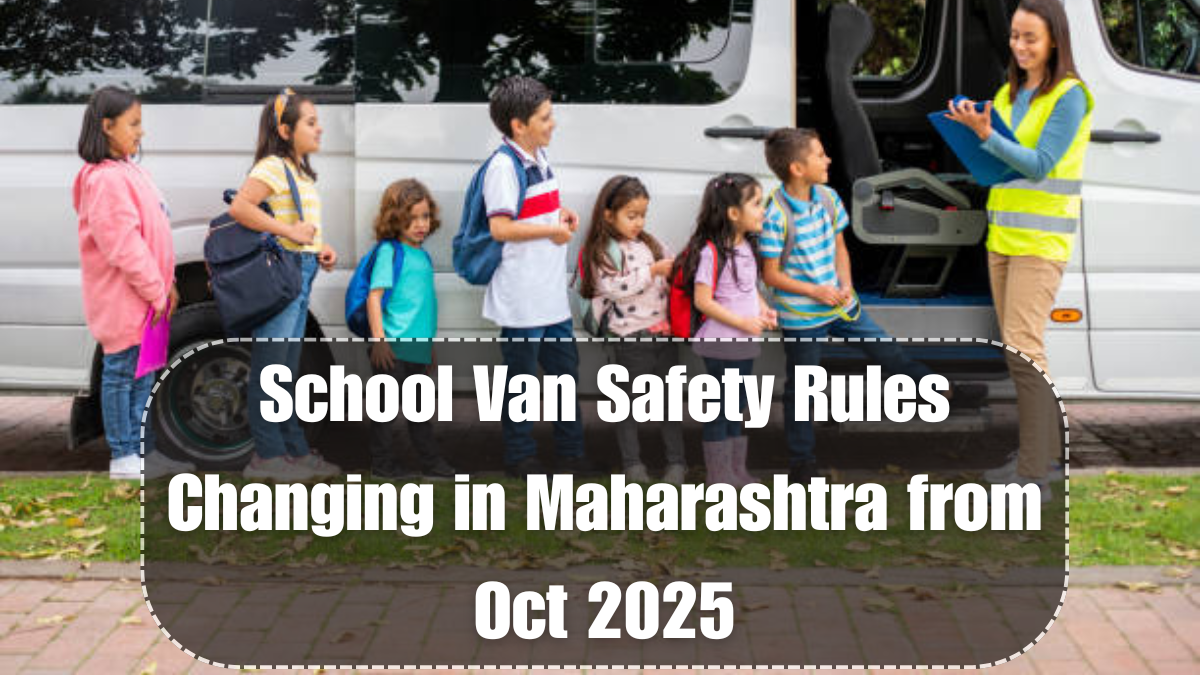The new school van safety norms implemented by the Maharashtra RTO from October 2025 mark a critical step toward securing the daily commute of schoolchildren—especially in rural and semi-urban areas. With increasing reports of overcrowding, lack of seat belts, and unregulated drivers in school vans, the government has introduced a comprehensive set of guidelines to improve rural school transport safety across the state.
The new norms apply to all school vans—private, contracted, or institution-owned—and cover vehicles transporting children from kindergarten to higher secondary classes. ZP School SG Pimpalgaon has already begun implementing these changes, becoming one of the first institutions in the district to align with the upgraded standards. From updated documentation to safety equipment, the new policies are being enforced through rigorous vehicle checks and school-level awareness drives.

What the new RTO safety rules cover
The revised RTO safety guidelines are extensive, covering all aspects of school van operation. Vehicles must now pass quarterly fitness inspections and display valid permits at all times. Drivers must undergo police verification and complete special child-safety training sessions.
Key highlights of the updated school van safety rules:
-
Mandatory seat belts and fire extinguishers in all vans
-
GPS tracking systems for real-time monitoring
-
Clearly marked emergency exits
-
Female attendants in vans carrying girl students
-
Display of school contact info inside the van
These rules aim to bring discipline and accountability to a sector that was previously overlooked, especially in remote zones that lack proper transport infrastructure.
ZP School’s action plan for school transport compliance
To ensure smooth implementation of the school van safety norms, ZP School SG Pimpalgaon has created a School Transport Committee. This team includes teachers, parents, local police representatives, and van drivers. The committee is responsible for conducting monthly audits, verifying compliance, and educating students on safe boarding and deboarding practices.
Here is the structured plan they follow:
| Compliance Area | Action Taken at ZP School SG Pimpalgaon |
|---|---|
| Driver & Vehicle Documents | Re-verified and updated for all vans |
| Safety Equipment | Fire extinguishers, first-aid kits installed |
| ID Display & Permits | Printed and placed visibly in each van |
| Student Training | Safety drill conducted every fortnight |
| GPS Tracking | Devices installed in all long-route vans |
With these practices in place, school van travel has become more secure and regulated.
Rural school transport gets a structured upgrade
Previously, rural school transport operated largely on trust, with little oversight. Vans were often overfilled, lacked safety measures, and sometimes even used by unauthorized drivers. The October 2025 policy shift aims to end such risky practices by enforcing a formal code of conduct for every vehicle used for student mobility.
This regulatory focus brings several benefits:
-
Enhances trust between parents and school authorities
-
Encourages timely and safe commuting
-
Reduces accidents caused by untrained or careless drivers
-
Builds a data-based monitoring system through GPS and recordkeeping
These updates are transforming how school van systems operate across villages and small towns, including SG Pimpalgaon.
Safety becomes a shared community responsibility
The real success of these school van safety norms lies in community participation. Parents have been actively involved in feedback sessions and are now required to sign safety acknowledgments. Students are given regular sessions on emergency protocols, and local authorities conduct random surprise vehicle checks to ensure continued compliance.
The change is already visible. Vans arrive on time, children are seated properly, and every vehicle is accounted for in real time. By involving all stakeholders—students, teachers, drivers, and parents—the school has turned a legal mandate into a movement.
ZP School SG Pimpalgaon now stands as a model of how RTO safety guidelines, when taken seriously, can create a safer and more reliable education transport ecosystem in rural India.
FAQs
What are the new school van safety norms implemented in 2025?
The school van safety norms introduced in October 2025 require seat belts, GPS, safety drills, and documented verification for all school transport vehicles.
How does the RTO ensure school van safety?
Through inspections, training, and mandatory documentation, the RTO safety rules ensure all school vans meet security and operational standards.
What steps has ZP School SG Pimpalgaon taken?
The school formed a transport committee, installed GPS devices, trained drivers, and ensured all vans follow proper vehicle check guidelines.
How is rural school transport improving through these rules?
The rural school transport system is becoming safer with better oversight, equipment upgrades, and community accountability.
Why are vehicle checks important under this policy?
Vehicle checks confirm the roadworthiness of school vans, preventing accidents caused by poor maintenance or lack of legal permits.
Click here to know more.
